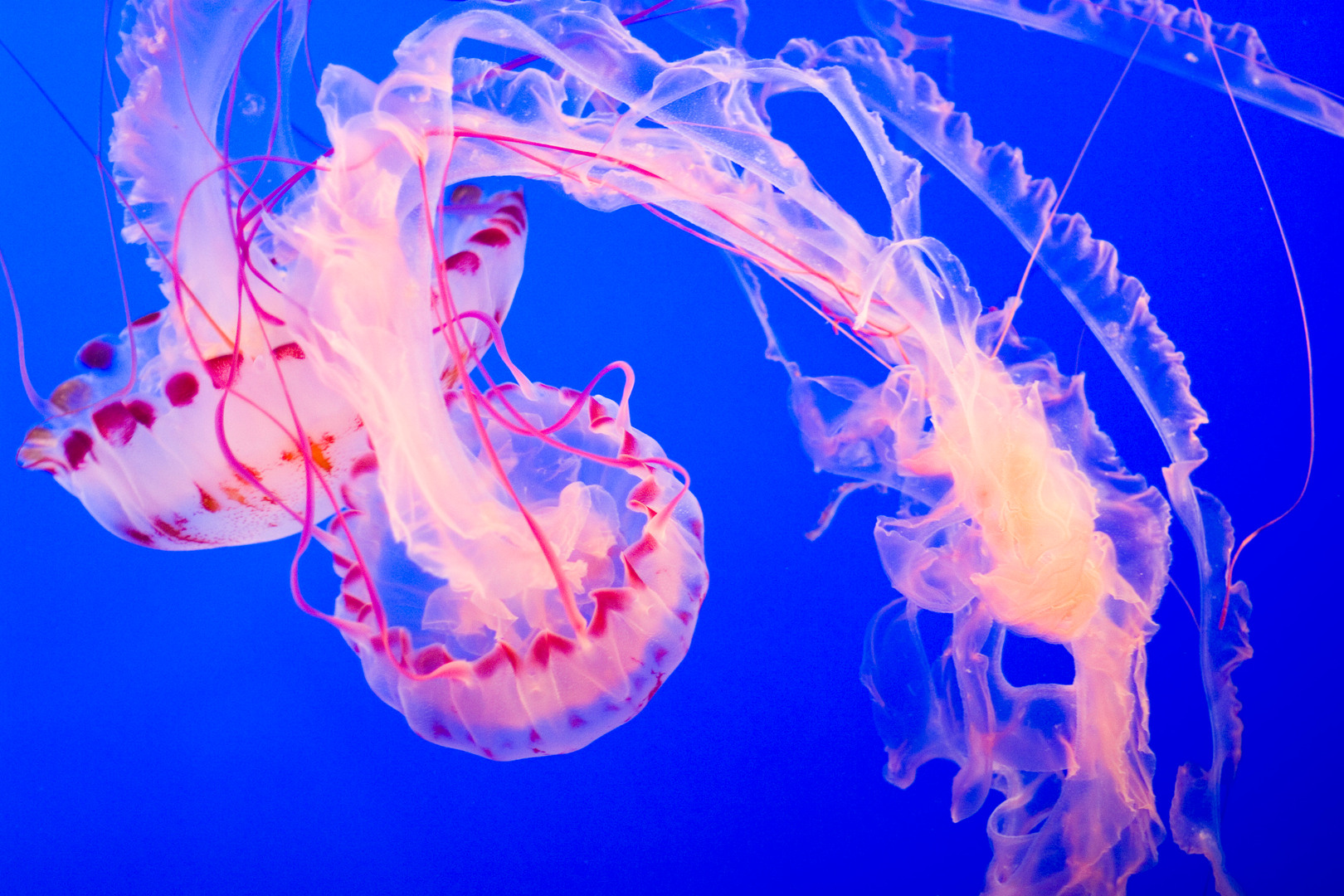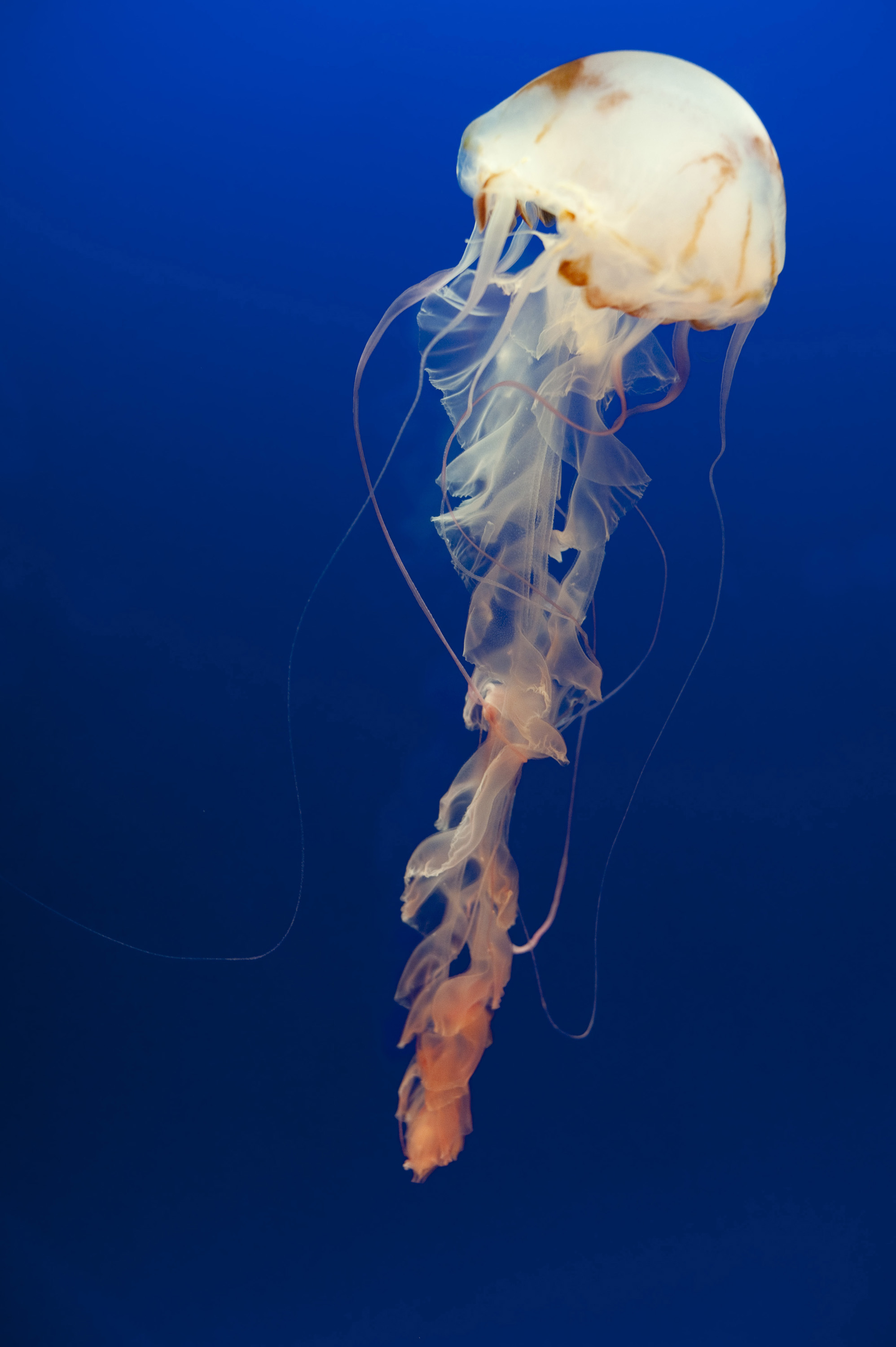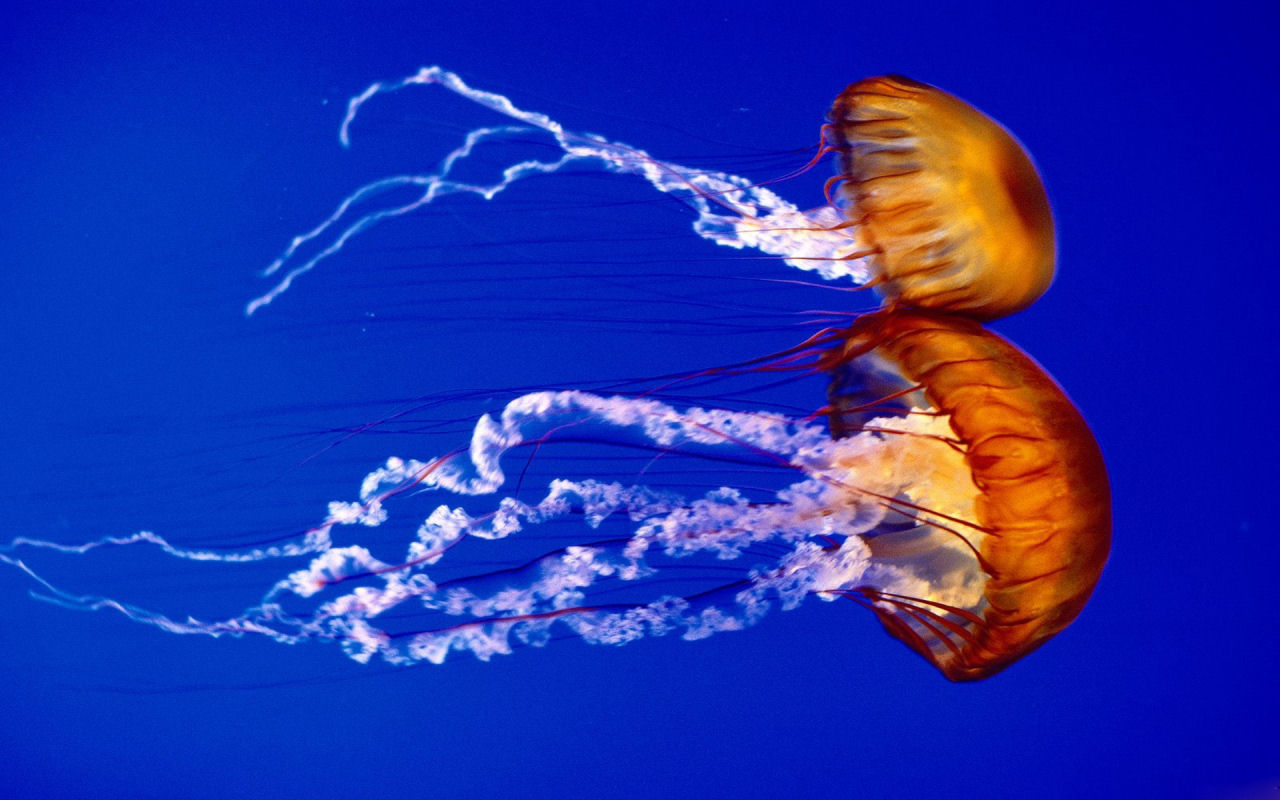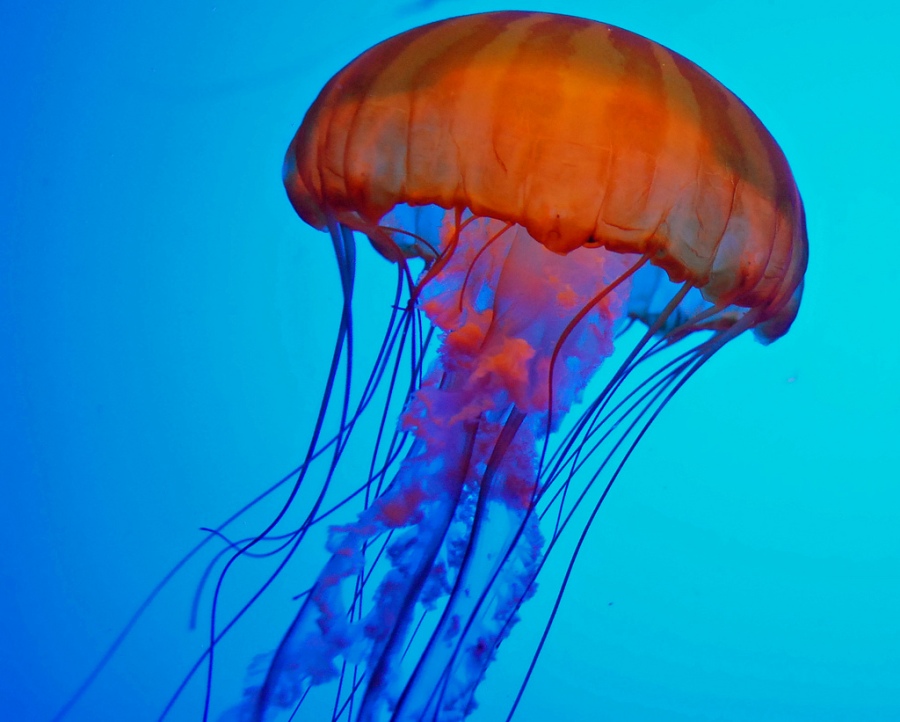
The gelatinous jellyfish are widespread in marine environments, although they are most common in tropical and subtropical regions. These ancient animals first appeared on earth over 650 million years ago. The smallest jellyfish are difficult to see without a microscope, while the largest known jellyfish is 2.5 meters in diameter; some jellyfish may have tentacles over 100 feet in length. The body plan of jellyfish is relatively primitive and contains less than 5 percent solid organic matter, the remaining bulk coming from water. They completely lack internal organs. The bell-like jellyfish bodies are composed of an outer layer of epidermis and an inner layer of gastrodermis that lines the gut. The gut has a single oral opening. Between the two layers is the mesoglea, which contains few cells and has a low metabolic rate. Four to eight oral arms are located near the oral opening and are used to transport food that has been captured by the tentacles. Jellyfish are able to exert minimal control over their movement, being largely at the mercy of ocean currents. Jellyfish do, however, have some regulation over vertical movement. They possess a ring of muscles embedded on the underside of the bell that pulses rhythmically, pushing water out of the hollow bell. Using this jet propulsion, jellyfish can change their position in the water column, moving in response to light and prey.
Feeding Strategy of Jellyfish
Jellyfish are simple but specialized carnivores. Although jellyfish have a low metabolic rate, they have the ability to capture large prey. These two characteristics allow jellyfish to survive in environments where prey are scarce. Jellyfish are equipped with a specialized apparatus, the cnidoblast, for defense and feeding. Cnidoblasts are found by the hundreds or thousands on the tentacles and sometimes on the body surface. Within each cnidoblast is a coiled harpoonlike nematocyst that is discharged by the presence of potential prey. The nematocyst injects poison into the prey as spines on the nematocyst anchor it to the prey. The trapped, paralyzed prey is pulled back by the tentacles and stuffed into the gastrovascular cavity to be digested. Jellyfish do not attack humans, but humans may receive stings if they encounter jellyfish. The effects of jellyfish poison on humans can range from a mild, itchy rash to death.
Jellyfish Reproduction
Most jellyfish proceed through several distinct stages in their life cycles. Male medusae produce sperm that are released from the oral opening into the oral opening of the female. The female then releases fertilized eggs which develop into slippershaped, solid masses of ciliated cells called planula which move through the water and eventually settle onto a solid surface. From these settled planula develop polyps that have cylindrical stalks attached to the substrate, with tentacles surrounding their mouths. At this stage, the polyps resemble sea anemones. The polyps divide and bud into tiny young jellyfish (ephyra) which are often carried far from the parent polyp by ocean currents. The ephyra develop into mature medusae over several weeks. The medusae normally live three to six months.
Jellyfish Facts
Classification:
Kingdom: Animalia
Subkingdom: Eumetazoa
Phylum: Cnidaria
Classes: Scyphozoa (jellyfish), Cubozoa (box jellyfish)
Orders: Stauromedusae (sessile cup-shaped forms), Coronatae (deep-dwelling jellyfish), Semaeostomae (disc
jellyfish), Rhizostomae (tentacle-less jellyfish), Chirodropidae and Carybdeidae (box jellyfish)
Geographical location: All the Earth's oceans
Habitat: Almost entirely marine, although a few freshwater species are known
Gestational period: Not well studied, but many species appear to reproduce once a year
Life span: Polyps usually develop over a period lasting a few months but may live for several years producing
clones; adult medusa forms live two to six months
Special anatomy: Umbrella-like body; no head or skeleton; composed of outer epithelial layer and inner
gastrodermis layer with thick elastic jellylike substance between them; gastrovascular cavity; specialized
ring of epitheliomuscular cells that pulses rhythmically to propel the animal through the water; four to eight
oral arms; tentacles bearing cnidoblasts containing nematocysts
Other popular Animals
Photo Gallery of - Jellyfish








 Animalia Life
Animalia Life